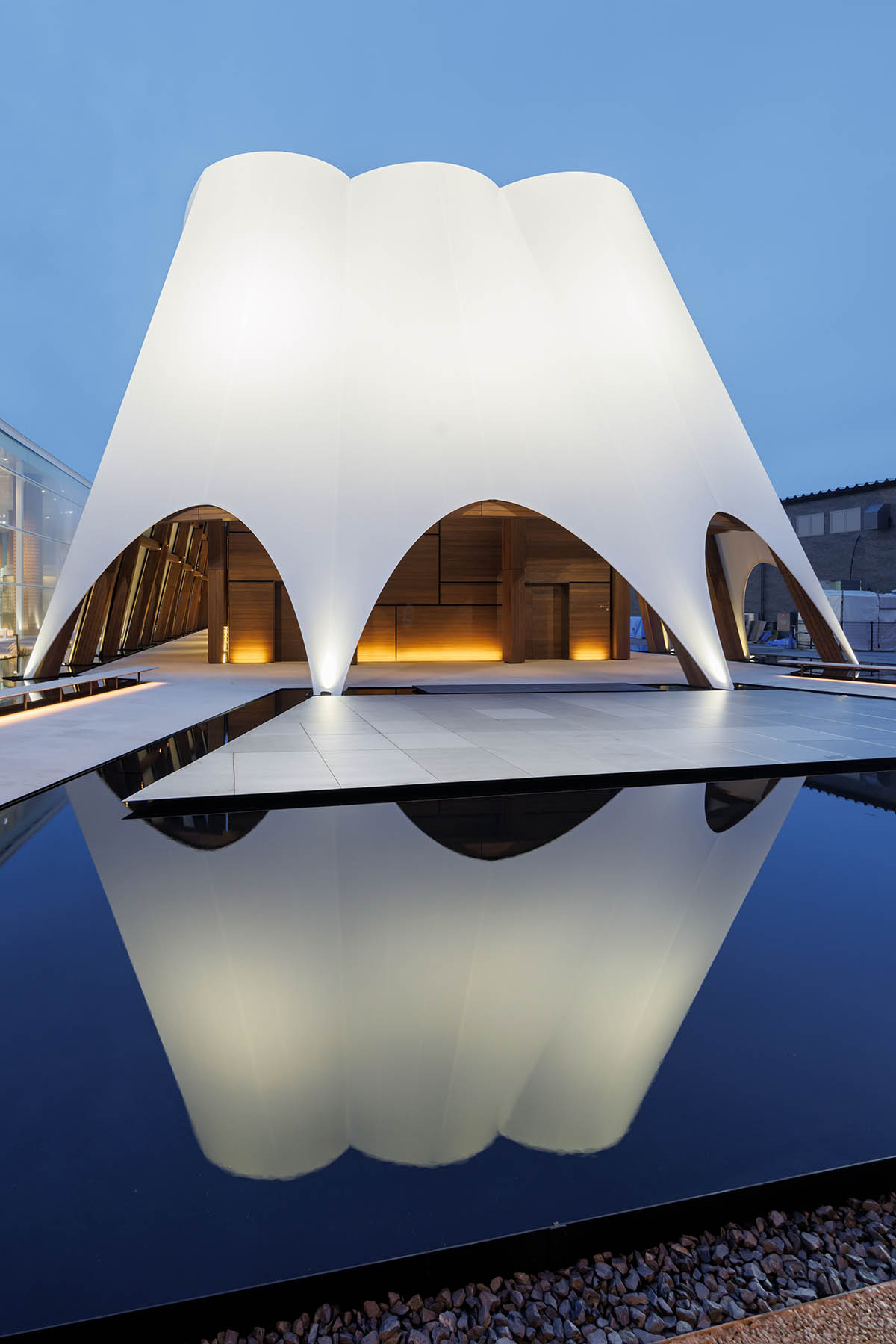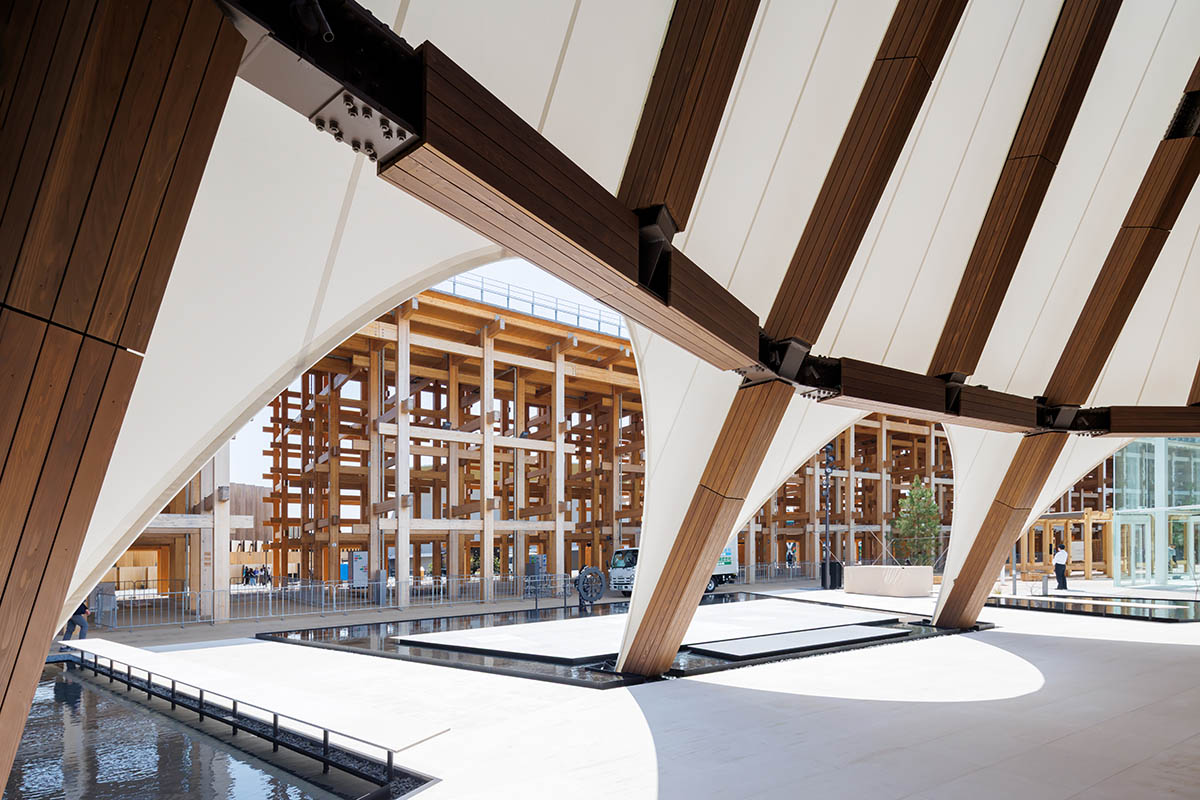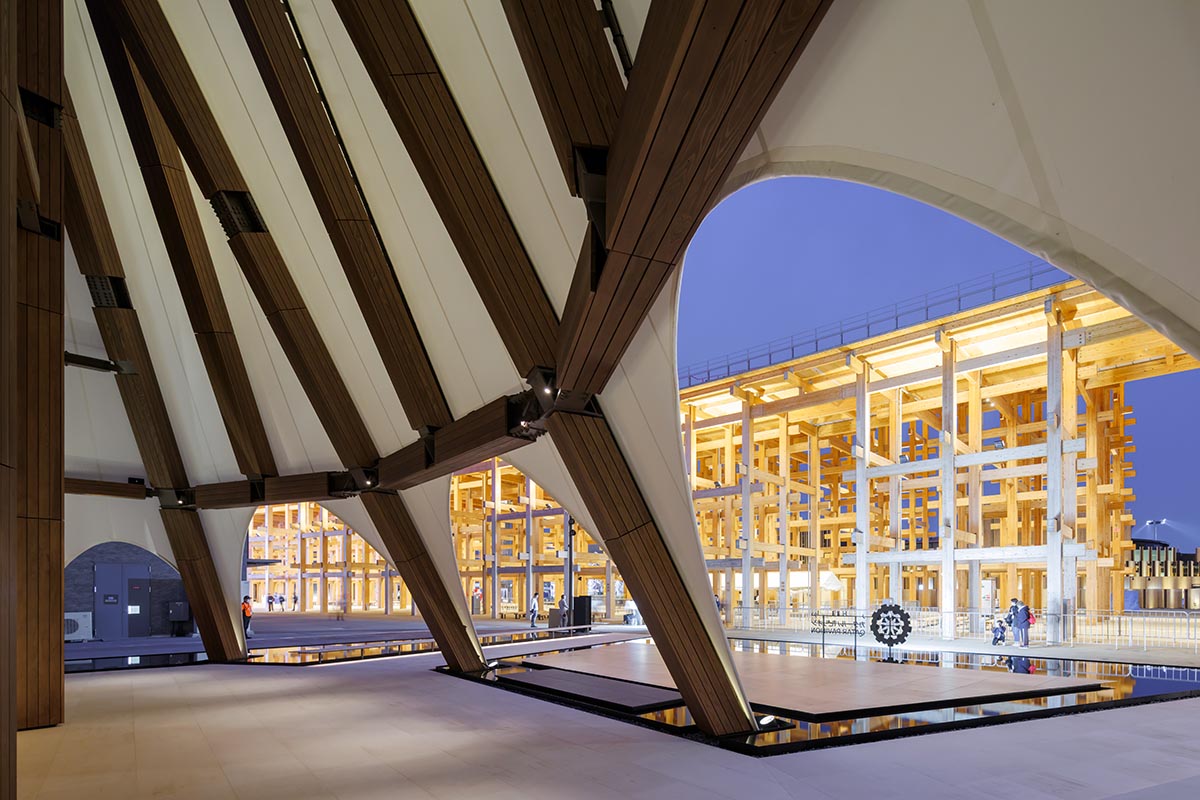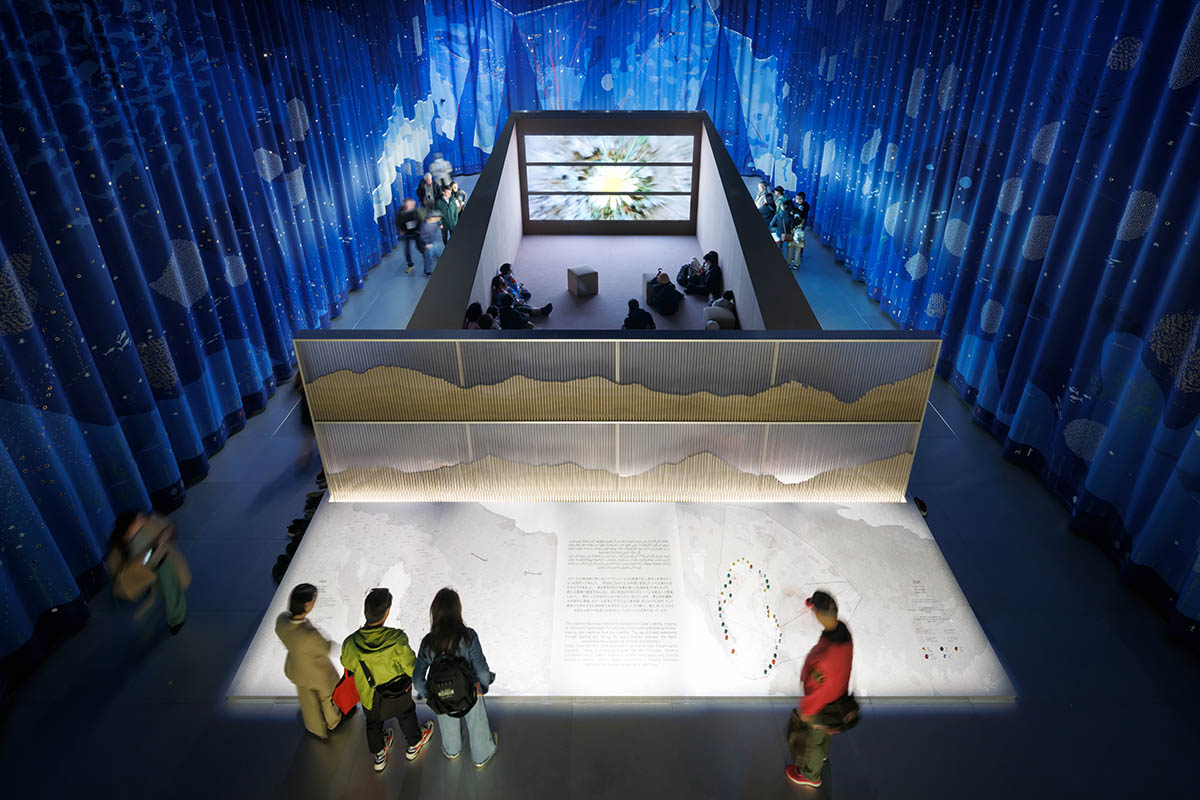
With its official opening last week, the Qatar Pavilion at Osaka Expo 2025 offered the world’s visitors a glimpse of the relationship between land and sea.
The Qatar Blueprint, a think tank housed under the Chairperson’s Office of Qatar Museums, served as the creative and content director for the Pavilion, which was commissioned by the Qatar Ministry of Commerce and Industry.

A multimedia exhibition created by the international architectural and urbanism firm OMA*AMO, housed in an exceptional building designed by Kengo Kuma and Associates, examines how Qatar’s 563-kilometer (360-mile) coastline has influenced the country’s culture, legacy, identity, and industry.
The Pavilion serves as the official national contribution to Osaka Expo 2025, an event devoted to assisting the global community in achieving the Sustainable Development Goals of the United Nations.
The Qatar Pavilion will be open to the public until October 13, 2025.

The Qatar Pavilion’s design by Kengo Kuma is reminiscent of the shape of a dhow, which is a type of traditional sailing vessel in Qatar and the surrounding area. Utilizing both traditional Qatari and Japanese wood-joinery techniques, the lightweight wooden frame, encased in flowing white fabric, honors the two countries’ close ties and their respective pearling traditions by connecting their maritime heritages.
An outdoor vitrine outside the Pavilion’s entry greets guests with poems by Ahmed bin Hassan Al-Hassan Al-Muhannadi and Sheikh Jassim bin Mohammed bin Thani, the founder of Qatar, printed over images of the coastline.
The photographs evoke the breathtaking color gradient that meets travelers as they approach Qatar, ranging from the deep blue of the sea to the dazzling turquoise of the sandy shoreline.

“For centuries, the people of Qatar have drawn both sustenance and meaning from the coastline. The dynamic harmony between land and sea has inspired our culture and heritage, provided our livelihoods, and helped transform our nation into what it is today, a global hub for trade and diplomacy. We are proud to share these experiences with the international audience at Expo 2025 Osaka,” said Her Excellency Sheikha Al Mayassa bint Hamad bin Khalifa Al Thani, Chairperson of Qatar Museums.
“Congratulations to the Qatar Pavilion Commissioner-General H.E. Mr. Jaber Jarallah Al-Marri, Ambassador of the State of Qatar to Japan, and H.E. Sheikh Ali Alwaleed Al-Thani, Deputy Commissioner-General and Chairman of the preparation committee. Thank you to the brilliant design teams at Kengo Kuma & Associates and OMA*AMO,” Al Thani explained.

Inside the Pavilion, visitors reach the “land” with sands of various hues representing the desert landscapes of inland Qatar and backlit wall graphics that showcase rock carvings discovered on the coastal region of Al Jassasiya during archaeological surveys from the 1950s to the 1970s. Two maps illustrate Qatar’s historical trajectory and modern development, visually illustrating 200 years of dramatic coastal transformation.
The exhibition’s main space features a panorama of the Qatari coastline and a “Sea Curtain” designed by interior architecture firm Inside-Outside that wraps around the Pavilion’s interior representing the maritime boundary that cradles the nation.

Central to the exhibition is a three-screen film by The Explorers that tells the story of Qatar’s journey from the past into the present through archival footage and contemporary imagery.
In line with Expo 2025’s overarching theme, “Designing Future Society for Our Lives,” the exhibition emphasizes the crucial role that Qataris have played in forming the country’s progress and future vision. It also shows how various sectors in Qatar have worked in tandem to empower and improve the lives of Qataris.

The National Museum of Qatar’s part, Land & Sea – Navigating the Journey, highlights the pearl merchants (altawash) who transported Qatari commodities to foreign markets and the pearl divers (ghawaseen) who risked their lives along the coast for generations. Using artifacts from Arabian Peninsula coastal homes, it also examines the place of women in these societies.
The second floor of the Pavilion has a conference area, or majlis, with seating designed by Qatari designer Maryam Al Homaid and a library assembled by Atlas Bookstore, a company established in Qatar.

As part of the Qatar–Japan 2012 Year of Culture, a special exhibit honors the relationship between Qatar and Japan and features artwork by Hayaki Nishigaki (Japan) and Yousef Ahmed (Qatar). Because of its adaptable design, the second level can accommodate lectures, workshops, events, and more.

Fatema Ibrahim Al Sehlawi, Meera Badran, Samir Bantal, Suzuki Hisao / NUAA, Alexey Sergeev, Hasan Zaidi, and The Explorers are among the photographers that are shown throughout the Pavilion.

The Qatari fashion brand TERZI created the official clothes for the Pavilion’s staff. Stúdio Noor Saad, QC+, TERZI, and the Government Communications Office of the State of Qatar created the identity for the Qatar Pavilion.
Qatar Museums (QM), which is celebrating its 20th anniversary, is the country’s leading institution for art and culture. It offers genuine and motivating cultural experiences through an expanding network of museums, heritage sites, festivals, public art works, and programs.
All images © Iwan Baan, courtesy Qatar Museums.
> via Qatar Museums
AMO
Kengo Kuma
Kengo Kuma and Associates
OMA
Osaka Expo
pavilion


AloJapan.com